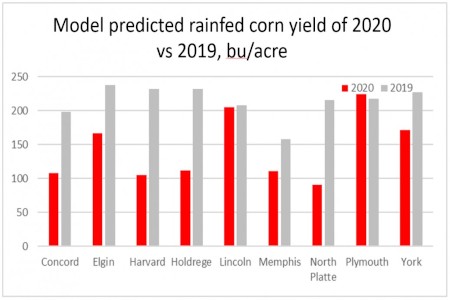Figure 1. Departure from normal precipitation in Nebraska from 1/1/2020 to 9/26/2020.
The Hybrid-Maize model predicted generally less rainfed corn yield in 2020 compared to 2019 across nine locations in Nebraska (Figure 2). Across these nine locations, West (North Platte and Holdrege) and South Central (Harvard) sites have more than 50% rainfed corn yield decrease compared to 2019, and eastern sites (Lincoln, Plymouth) have almost the same the yield as 2019, while the rest of the locations have yield decrease of 25% (York), 30% (Elgin), and 45% (Concord) (Figure 2).

Figure 2. Maize-hybrid model predicted corn yield of nine rainfed sites across Nebraska.
Given the anticipated yield decreases, the residual soil N is expected to be high for rainfed crops. Growers can credit this residual soil nitrate-N in determining fertilizer-N rates for 2021. To credit residual nitrate-N, sample soil at 2- or 3-foot depth during fall or spring to determine the amount of residual nitrate-N and plug this value into the equation for determining the N rate. Calculate the N rate according to Nutrient Management Suggestions for Corn or Nutrient Management for Agronomic Crops in Nebraska EC 117.
Timing of fertilizer-N application can be critical to crop yield, N use efficiency, economic returns, and N losses to the environment. Since fall and winter precipitation cannot be predicted, there is high potential for N loss with heavy precipitation during the fall, winter, or early spring. Therefore, spring soil sampling combined with N application split between pre-plant and in-season is a good strategy for synchronizing N supply with N uptake and minimizing N loss. However, if you plan to have nitrogen application this fall, consider the following to avoid over-application of nitrogen while reducing the potential of nitrogen loss.
- Sample soil at 2- or 3-foot depth to determine residual nitrate-N to be credited in nitrogen rate calculations.
- Apply fertilizer-N (and manure) when the soil temperature is below 50°F at the 4-inch soil depth and trending cooler (Check CropWatch Soil Temperature).
- Apply anhydrous ammonia rather than other N fertilizers.
- Limit fall application of N to silt loams, silty clay loams, and finer textured soils.
- Consider the use of nitrification inhibitors to slow the conversion of ammonium to nitrate, especially on coarse textured soils.
- Avoid fall application on wet or flooding-prone soils.
- Consider applying part of the nitrogen in the fall and applying the remaining in-season, preferably according to the results of pre-sidedress nitrate testing or canopy sensing.
- Follow the UNL recommendations and plan to apply 5% more fertilizer-N with fall compared with spring application to compensate for the greater potential for N loss.
To allowing producers to get hands-on experience in existing and new technologies to manage nitrogen more efficiently, UNL launched a precision nitrogen management project in 2020. Producers interested in this project would be able to compare their current N management practice against canopy sensing, images, crop models-based tools, and inhibitors with the support of UNL extension educators and specialists.
Source : unl.edu